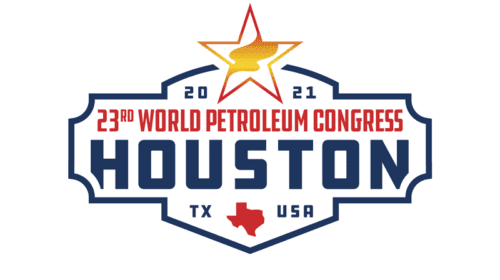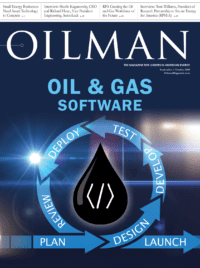Natural disasters have always been something everyone must think about from time to time. While it might not ever happen to you or your company, it still happens, and it is happening more and more as the Earth’s weather patterns change. In the oil and gas industry, managers must think about the possibility of natural disasters striking more often. This is imperative due to the location of oil and gas wells in extreme locations such as in the sea, on the coast, in the desert, etc. All of these locations have unique weather patterns. Additionally, there are also earthquakes, tornadoes, hurricanes, and massive tidal waves that need to be considered, too. All of these threats will lead to significant damage if the right precautions are not in place. Finally, do not forget about getting the proper insurance.
To get a better idea of what some companies are doing to mitigate the damage that could occur from a natural disaster, we reached out to a company to learn more about their processes.
Logistics industry faces changing weather
Dominic Dupre of Dupre Logistics provided some insight into how some companies are gearing up for more and more natural disasters that are occurring in the U.S.
Unfortunately, our emergency response surrounding natural disasters is put to work once every 2-3 years as we operate along the Gulf Coast, from Florida to South Texas, so we have been able to adjust and learn from each experience. In the crude hauling division, we operate a central dispatch model with remote login capabilities that ensure continuity of the business even when the office is closed down. Additionally, our field execution is segmented by area with multiple maintenance facilities that ensure the business continues to run in the event that operations are shut down in certain geographical areas.
Besides natural disasters, there are also disasters that come from within oil and gas equipment and can trigger a massive disaster that can give way to other environmentally damaging effects. For example, the most recent The Deepwater Horizon oil spill began on April 20, 2010, in the Gulf of Mexico on the BP-operated Macondo Prospect. At approximately 9:45 pm, methane gas from the well expanded into the drilling riser and rose into the drilling rig, where it ignited and exploded, engulfing the platform. There were 126 crew members who were on board at the time: seven BP employees, 79 from Transocean and employees from other companies. The Deepwater Horizon sank on the morning of April 22, 2010. It was considered to be the largest accidental marine oil spill in the history of the petroleum industry. The U.S. Government estimated the total discharge at 4.9 million barrels of oil into the ocean.
Government and regulatory bodies are here to help
The National Petroleum Council prepared a paper entitled, “Enhancing Emergency Preparedness for Natural Disasters: Government and Oil and Natural Gas Industry Actions to Prepare, Respond, and Recover.” The paper, published in 2014, found the following challenges in addressing emergency situations:
- It is critically important for government emergency response organizations to have a baseline understanding of the dynamic nature of the oil and gas supply chains.
- Improved situational awareness about the status of oil and gas infrastructure and service disruptions from industry would enable DOE and other government agencies to more effectively respond.
- A major challenge during emergency response is effective communication between and within federal and state agencies and with industry.
- The maintenance of a trained, knowledgeable response organization within government agencies should be a priority along with processes to sustain it.
- Within industry and across all levels of government, leadership commitment and funding are required to continuously improve and ensure a state of readiness to respond to supply chain disruptions.
Be prepared, not scared
At a recent API (American Petroleum Institute) meeting this past May 2018, a subject of debate was that of being prepared in the oil and gas industry. This is imperative as the southern United States is well into Hurricane season, which runs from May 15 (previously June 1 and now has grown by 15 days. However, this is still up for debate.) to November 30. Hurricanes are one of the biggest natural disasters for the U.S. and the refining industry, due to refining units’ proximity to water.
Jeff Gunnulfsen, Director of Security and Risk Management at the American Fuel and Petrochemical Manufacturers, said the following on his commitment to safety in the field at the API Meeting: “The refining and petrochemical industries practice emergency response, every day, 365 days a year. No two storms or emergencies are alike, and our industries prepare vigorously and consistently for all types of disruptions. Preparation is the first step in managing major events, and by working diligently with industry partners, we’re able to minimize the impacts of unpredictable events.”
More information on the steps oil and gas industry professionals are taking in the midst of Hurricane season can be found here: https://www.api.org/ news-policy-and-issues/hurricane-information.
Eye of the storm
While the weather is changing, the oil and gas industry is adapting and developing new technologies and procedures to weather the storm. New protocols are being established and more time is being dedicated to safety training for handling natural disasters. While natural disasters cannot be prevented, tactics can be employed to help mitigate the damage caused by a storm or worse. While mother nature has the upper hand in this battle, humans are resourceful and full of ingenuity in coming up with innovative ways to prevent damage or to make repairs on the fly.
Eissler, former editor-in- chief of Oil & Gas Engineering magazine, previously worked as an editor for Dubai-based The Oil & Gas Year Magazine.













